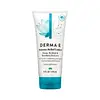What's inside
What's inside
 Key Ingredients
Key Ingredients

 Benefits
Benefits

 Concerns
Concerns

 Ingredients Side-by-side
Ingredients Side-by-side

Cetearyl Alcohol
EmollientGlycerin
HumectantCetyl Alcohol
EmollientCeteareth-20
CleansingOlea Europaea Fruit Oil
MaskingIsononyl Isononanoate
EmollientCarthamus Tinctorius Seed Oil
MaskingPEG-100 Stearate
Potassium Phosphate
BufferingAllantoin
Skin ConditioningCeramide NP
Skin ConditioningCeramide AP
Skin ConditioningCeramide EOP
Skin ConditioningCarbomer
Emulsion StabilisingNiacinamide
SmoothingGlyceryl Stearate
EmollientGlycine Soja Oil
EmollientBehentrimonium Methosulfate
Vitis Vinifera Seed Oil
EmollientSodium PCA
HumectantOphiopogon Japonicus Root Extract
Skin ConditioningSodium Lauroyl Lactylate
EmulsifyingHelianthus Annuus Seed Oil
EmollientCholesterol
EmollientRosmarinus Officinalis Extract
AntimicrobialRosmarinus Officinalis Leaf Extract
AntimicrobialPhenoxyethanol
PreservativeChlorphenesin
AntimicrobialDipotassium Phosphate
BufferingTocopherol
AntioxidantPropylheptyl Caprylate
EmollientHydroxyacetophenone
AntioxidantHydrolyzed Hyaluronic Acid
HumectantPersea Gratissima Oil
Skin ConditioningXanthan Gum
EmulsifyingPhytosphingosine
Skin ConditioningEthylhexylglycerin
Skin ConditioningCetearyl Alcohol, Glycerin, Cetyl Alcohol, Ceteareth-20, Olea Europaea Fruit Oil, Isononyl Isononanoate, Carthamus Tinctorius Seed Oil, PEG-100 Stearate, Potassium Phosphate, Allantoin, Ceramide NP, Ceramide AP, Ceramide EOP, Carbomer, Niacinamide, Glyceryl Stearate, Glycine Soja Oil, Behentrimonium Methosulfate, Vitis Vinifera Seed Oil, Sodium PCA, Ophiopogon Japonicus Root Extract, Sodium Lauroyl Lactylate, Helianthus Annuus Seed Oil, Cholesterol, Rosmarinus Officinalis Extract, Rosmarinus Officinalis Leaf Extract, Phenoxyethanol, Chlorphenesin, Dipotassium Phosphate, Tocopherol, Propylheptyl Caprylate, Hydroxyacetophenone, Hydrolyzed Hyaluronic Acid, Persea Gratissima Oil, Xanthan Gum, Phytosphingosine, Ethylhexylglycerin
Colloidal Oatmeal 1%
AbsorbentAllantoin
Skin ConditioningArctium Lappa Root Extract
Skin ConditioningArctostaphylos Uva-Ursi Leaf Extract
Skin ConditioningCaprylic/Capric Triglyceride
MaskingCetearyl Glucoside
EmulsifyingCetyl Alcohol
EmollientChamomilla Recutita Flower
Skin ConditioningCoco-Caprylate
EmollientCoptis Chinensis Root Extract
AntioxidantDimethicone
EmollientEthylhexylglycerin
Skin ConditioningFagara Zanthoxyloides Fruit Extract
Skin ConditioningGlycerin
HumectantGlyceryl Stearate
EmollientGlyceryl Stearate Citrate
EmollientLeuconostoc/Radish Root Ferment Filtrate
AntimicrobialMelia Azadirachta Leaf
Skin ConditioningPhenoxyethanol
PreservativePotassium Sorbate
PreservativeWater
Skin ConditioningSimmondsia Chinensis Seed Oil
EmollientSodium Hydroxide
BufferingStearic Acid
CleansingStearyl Alcohol
EmollientTocopheryl Acetate
AntioxidantColloidal Oatmeal 1%, Allantoin, Arctium Lappa Root Extract, Arctostaphylos Uva-Ursi Leaf Extract, Caprylic/Capric Triglyceride, Cetearyl Glucoside, Cetyl Alcohol, Chamomilla Recutita Flower, Coco-Caprylate, Coptis Chinensis Root Extract, Dimethicone, Ethylhexylglycerin, Fagara Zanthoxyloides Fruit Extract, Glycerin, Glyceryl Stearate, Glyceryl Stearate Citrate, Leuconostoc/Radish Root Ferment Filtrate, Melia Azadirachta Leaf, Phenoxyethanol, Potassium Sorbate, Water, Simmondsia Chinensis Seed Oil, Sodium Hydroxide, Stearic Acid, Stearyl Alcohol, Tocopheryl Acetate
Ingredients Explained
These ingredients are found in both products.
Ingredients higher up in an ingredient list are typically present in a larger amount.
Allantoin is a soothing ingredient known for its protective and moisturizingg properties. Because of this, it is often added to products with strong active ingredients.
Studies show higher concentrations of this ingredient can promote wound healing.
Though it can be derived from the comfrey plant, allantoin is produced synthetically for cosmetic products to ensure purity.
Learn more about AllantoinCetyl Alcohol is a fatty alcohol. Fatty Alcohols are most often used as an emollient or to thicken a product.
Its main roles are:
Though it has "alcohol" in the name, it is not related to denatured alcohol or ethyl alcohol.
The FDA allows products labeled "alcohol-free" to have fatty alcohols.
Learn more about Cetyl AlcoholEthylhexylglycerin (we can't pronounce this either) is commonly used as a preservative and skin softener. It is derived from glyceryl.
You might see Ethylhexylglycerin often paired with other preservatives such as phenoxyethanol. Ethylhexylglycerin has been found to increase the effectiveness of these other preservatives.
Glycerin is already naturally found in your skin. It helps moisturize and protect your skin.
A study from 2016 found glycerin to be more effective as a humectant than AHAs and hyaluronic acid.
As a humectant, it helps the skin stay hydrated by pulling moisture to your skin. The low molecular weight of glycerin allows it to pull moisture into the deeper layers of your skin.
Hydrated skin improves your skin barrier; Your skin barrier helps protect against irritants and bacteria.
Glycerin has also been found to have antimicrobial and antiviral properties. Due to these properties, glycerin is often used in wound and burn treatments.
In cosmetics, glycerin is usually derived from plants such as soybean or palm. However, it can also be sourced from animals, such as tallow or animal fat.
This ingredient is organic, colorless, odorless, and non-toxic.
Glycerin is the name for this ingredient in American English. British English uses Glycerol/Glycerine.
Learn more about GlycerinGlyceryl Stearate is a mix of glycerin and stearic acid.
It is used to stabilize the mixing of water and oil ingredients. By preventing these ingredients from separating, it can help elongate shelf life. It can also help thicken the product's texture.
As an emollient, it helps soften skin and supports barrier-replenishing ingredients.
In cosmetics, Glyceryl Stearate is often made from vegetable oils or synthetically produced.
This ingredient may not be fungal-acne safe
Fun fact: The human body also creates Glyceryl Stearate naturally.
Learn more about Glyceryl StearatePhenoxyethanol is a preservative that has germicide, antimicrobial, and aromatic properties. Studies show that phenoxyethanol can prevent microbial growth. By itself, it has a scent that is similar to that of a rose.
It's often used in formulations along with Caprylyl Glycol to preserve the shelf life of products.